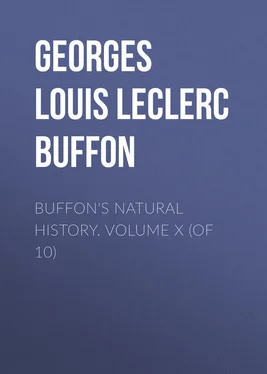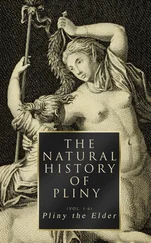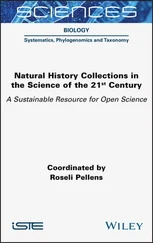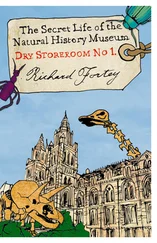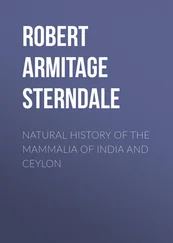Georges Buffon - Buffon's Natural History. Volume X (of 10)
Здесь есть возможность читать онлайн «Georges Buffon - Buffon's Natural History. Volume X (of 10)» — ознакомительный отрывок электронной книги совершенно бесплатно, а после прочтения отрывка купить полную версию. В некоторых случаях можно слушать аудио, скачать через торрент в формате fb2 и присутствует краткое содержание. Издательство: Иностранный паблик, Жанр: foreign_antique, foreign_prose, на английском языке. Описание произведения, (предисловие) а так же отзывы посетителей доступны на портале библиотеки ЛибКат.
- Название:Buffon's Natural History. Volume X (of 10)
- Автор:
- Издательство:Иностранный паблик
- Жанр:
- Год:неизвестен
- ISBN:нет данных
- Рейтинг книги:5 / 5. Голосов: 1
-
Избранное:Добавить в избранное
- Отзывы:
-
Ваша оценка:
- 100
- 1
- 2
- 3
- 4
- 5
Buffon's Natural History. Volume X (of 10): краткое содержание, описание и аннотация
Предлагаем к чтению аннотацию, описание, краткое содержание или предисловие (зависит от того, что написал сам автор книги «Buffon's Natural History. Volume X (of 10)»). Если вы не нашли необходимую информацию о книге — напишите в комментариях, мы постараемся отыскать её.
Buffon's Natural History. Volume X (of 10) — читать онлайн ознакомительный отрывок
Ниже представлен текст книги, разбитый по страницам. Система сохранения места последней прочитанной страницы, позволяет с удобством читать онлайн бесплатно книгу «Buffon's Natural History. Volume X (of 10)», без необходимости каждый раз заново искать на чём Вы остановились. Поставьте закладку, и сможете в любой момент перейти на страницу, на которой закончили чтение.
Интервал:
Закладка:
OF AIR, WATER, AND EARTH
BY our former observations it appears that air is the necessary and first food of fire, which can neither subsist nor propagate but by what it assimilates, consumes, or carries off, of that element, whereas of all material substances, air is that which seems to exist the most independently of the aid or presence of fire; for although it habitually has nearly the same heat as other matters on the surface of the earth, it can do without it and requires infinitely less than any of the rest to support its fluidity, since the most excessive cold cannot deprive it of that. The strongest condensations are not capable of breaking its spring; the active fire, in combustible matters, is the only agent which can alter its nature by rarefying and extending its spring to the point of rendering it ineffectual, and thus destroying its elasticity. In this state, and in all the links which precede, the air is capable of re-assuming its elasticity, in proportion as the vapours of combustible matters evaporate and separate from it. But if the spring have been totally weakened and extended that it cannot re-instate itself, from having lost all its elastic power, the air, volatile as it might before have been, becomes a fixed substance which incorporates with the other substances, and forms a constituent part of all those to which it unites by contact. Under this new form it can no longer forsake the fire, except to unite, like fixed matter, to other fixed matters; and if there remain some parts inseparable from fire, they then make a portion of that element serve it for a base, and are deposited with it in the substance they heat and penetrate together. This effect is manifested in all calcinations, and is the more sensible as the heat is longer; but combustion demands only a small time to completely effectuate the same. If we wish to hasten calcination the use of bellows may be necessary, not so much to augment the heat of the fire as to establish a current of air on the surface of the matters; yet it is not requisite for the fire to be very fierce to deprive air of its elasticity, for a very moderate heat, when constantly applied on a small quantity, is sufficient to destroy the spring; and for this air, without spring, to fix itself afterwards in bodies, there is only a little more or less time required, according to the affinity it may have under this new form, with the matters to which it unites. The heat of the body of animals, and even vegetables, is sufficiently powerful to produce this effect. The degrees of heat are different in different kinds of animals: birds are the hottest, from which we pass successively to quadrupeds, man, cetaceous animals, reptiles, fish, insects, and, lastly, to vegetables, whose heat is so trifling as to have made some naturalists declare they had not any, although it is very apparent, and in winter surpasses that of the atmosphere. I have frequently observed in trees that were cut in cold weather, that their internal part was sensibly warm, and that this heat remained for many minutes. This heat is only moderate while the tree is young and sound, but as soon as it grows old the heart heats by the fermentation of the pith, which no longer circulates there with the same freedom; and as soon as this heat begins the centre receives a red tint, which is the first index of the perishing state of the tree, and the disorganization of the wood. The reason naturalists have not found there was a difference between the temperature of the air, and the heat of vegetables is, because they have made their observations at a bad time of the year, and not paid attention, that in the summer the heat of the air exceeds that of the internal part of a tree; whereas in winter it is quite the contrary. They have not remembered that the roots have constantly the degree of heat which surrounds them, and that this heat of the internal part of the earth is, during all winter, considerably greater than that of the air, and the surface of the earth. They did not consider that the motion alone of the pith, already warm, is a necessary cause of heat, and that this motion, increasing by the action of the sun, or by an external heat, that of vegetables must be so much the greater as the motion of their pith is more accelerated, &c.
Here the air contributes to the animal and vital heat, as we have seen that it does to the action of fire in combustible and calcinable matters. Animals, which have lungs, and which consequently respire the air, have more heat than those deprived of them; and the more the internal surface of the lungs is extended, and ramified in a greater number of cells, the more it presents greater superficies to the air which the animal draws by inspiration; the more also its blood becomes hotter, the more it communicates heat to all parts of the body it nourishes, and this proportion takes place in all known animals. Birds, relatively to the volume of their body, have lungs considerably more extended than man or quadrupeds. Reptiles, even those with a voice, as frogs, instead of lungs have a simple bladder. Insects which have little or no blood breathe the air only by some pipes, &c. Thus taking the degree of the temperature of the earth for the term of comparison, I have observed that this heat being supposed ten degrees, that of birds was nearly thirty-three, that of some quadrupeds more than thirty-one and a half, that of man thirty and a half, or thirty-one, whereas that of frogs is only fifteen or sixteen, and that of fishes and insects only eleven or twelve, which is nearly the same as that of vegetables. Thus the degree of heat in man and animals depends on the force and extent of the lungs; these are the bellows of the animal machine: the only difficulty is to conceive how they carry the air on the fire which animates us, a fire whose focus seems to be indeterminate; a fire that has not even been qualified with this name, because it is without flame or any apparent smoke, and its heat is only moderate and uniform. However, if we consider that heat and fire are effects, and even elements of the same class; that heat rarefies air, and, by extending its spring, it may render it without effect; we may imagine, that the air drawn by our lungs being greatly rarefied, loses its spring in the bronchiæ and little vesicles, where it is soon destroyed by the arterial and venous blood, for these blood-vessels are separated from the pulmonary vesicles by such thin divisions that the air easily passes into the blood, where it produces the same effect as upon common fire, because the heat of this blood is more than sufficient to destroy the elasticity of the particles of air, and to drag them under this new form into all the roads of circulation. The fire of the animal body differs from common fire only in more or less; the degree of heat is less, hence there is no flame, because the vapours, which represent the smoke, have not heat enough to inflame; every other effect is the same: the respiration of a young animal absorbs as much air as the light of a candle, for if inclosed in vessels of equal capacities, the animal dies in the same time as the candle extinguishes: nothing can more evidently demonstrate that the fire of the animal and that of the candle are not of the same class but of the same nature, and to which the assistance of the air is equally necessary.
Vegetables, and most insects, instead of lungs, have only aspiratory tubes, by which they pump up the air that is necessary for them; it passes in very sensible balls into the pith of the vine. This air is not only pumped up by the roots but often even by the leaves, and forms a very essential part of the food of the vegetable which assimilates, fixes, and preserves it. Experience fully confirms all we have advanced on this subject, and that all combustible matters contain a considerable quantity of fixed air, as do also all animals and vegetables, and all their parts, and the waste which proceeds therefrom; and that the greatest number likewise include a certain quantity of elastic air. And, notwithstanding the chimerical ideas of some chemists, respecting phlogiston, there does not remain the smallest doubt but that fire or light produces, with the assistance of air, all the effects thereof.
Читать дальшеИнтервал:
Закладка:
Похожие книги на «Buffon's Natural History. Volume X (of 10)»
Представляем Вашему вниманию похожие книги на «Buffon's Natural History. Volume X (of 10)» списком для выбора. Мы отобрали схожую по названию и смыслу литературу в надежде предоставить читателям больше вариантов отыскать новые, интересные, ещё непрочитанные произведения.
Обсуждение, отзывы о книге «Buffon's Natural History. Volume X (of 10)» и просто собственные мнения читателей. Оставьте ваши комментарии, напишите, что Вы думаете о произведении, его смысле или главных героях. Укажите что конкретно понравилось, а что нет, и почему Вы так считаете.
